Making summer sausage is not a new concept. Salt has been used since the Middle Ages to preserve meat and keep it from spoiling, and over the years man has become increasingly creative about how he chooses to preserve the bounty of the hunt. Eventually, the practice of using salt, lactic acid fermentation, and smoke to preserve meat and create a sausage became a method that successfully preserved meat through the long winter months.
And perhaps there’s no better-known sausage than the ubiquitous summer sausage. Many of us grew up on the brown-cased logs of meat, downing slices at family gatherings, hunting trips, and sports games. Easy to eat, store, and pack along for adventures, summer sausage has become the “do-all” sausage of America.
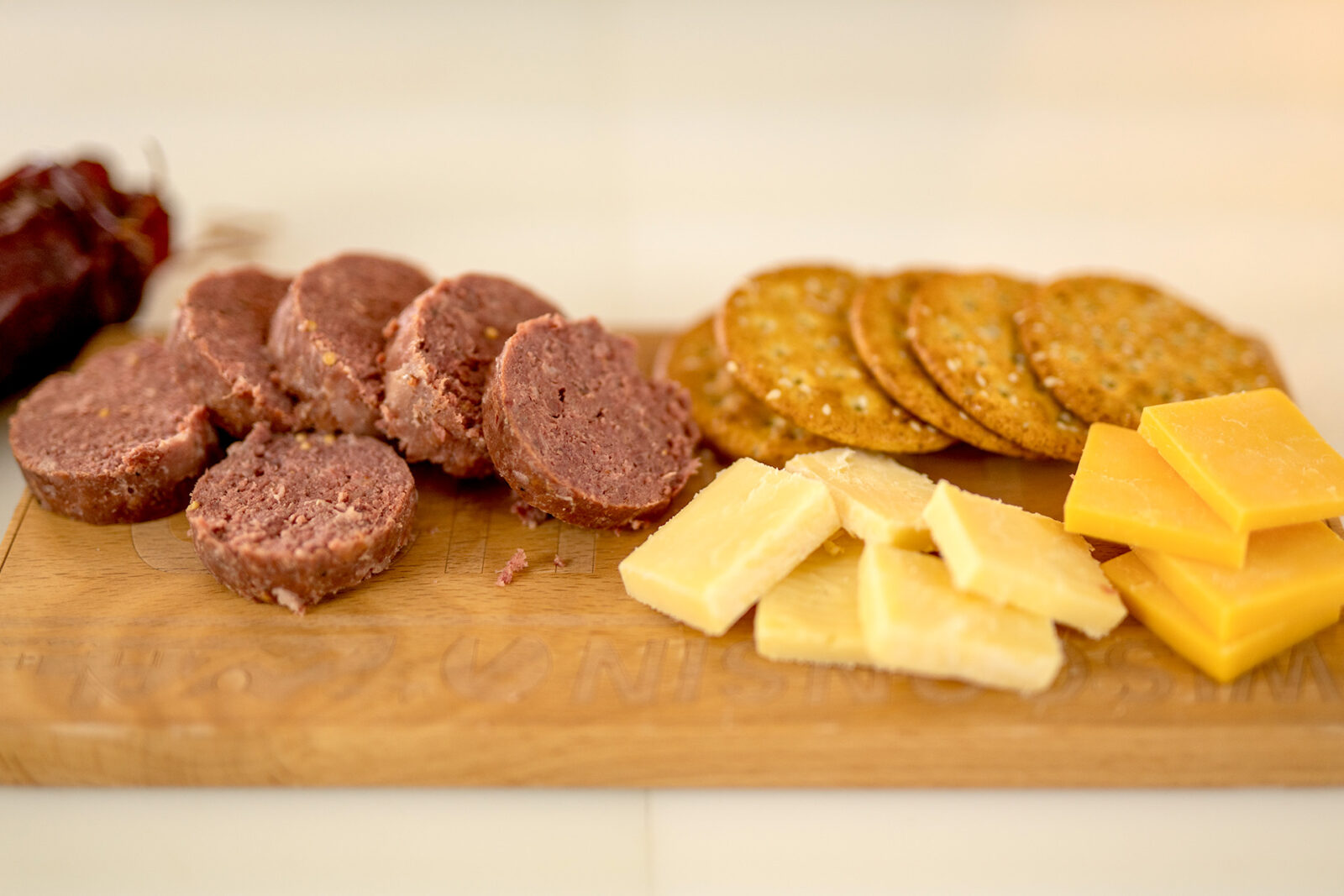
It’s a basic creation. A semi-dry sausage (meaning it doesn’t have quite as impressive of a shelf life as its cousins salami or pepperoni), summer sausage maintains its quality for months without refrigeration, making it a top choice for hunting camp and trips away from refrigeration. (If you want to keep it in the fridge or cooler, go ahead. It’s not going to hurt anything.)
Most summer sausage is made from a mix of beef and pork, seasoned with garlic, mustard seed, black pepper, and plenty of salt.
It’s a treat we all know and love. But, like most things culinary, there’s room for exploration. For mixing things up; finding our own recipes, and making that food off the shelf that much better when we craft it at home.
That’s where Chef Albert Wutsch of From Field to Table comes in. A MEAT! Ambassador, Wutsch shows people how to prepare summer sausage during his “Sausage Making From Field to Table” events, along with other cured, smoked, and fermented sausages and brined, cured, pickled, and smoked meats.
We sat down with Wutsch to talk about his culinary background, summer sausage adventures, and why hunters may want to start making their own sausage:
onX: Tell us a little bit about yourself. What about cooking drew your interest?
Wutsch: I currently live south of Missoula in Lolo, Montana. I’m married to the woman of my dreams, Sandy, and we have two children (Sara and Andrew), and three grandchildren. When I was young, Mom and Dad got my two brothers and I interested in both the outdoors and scouting—my two brothers and I are Eagle Scouts. My dad was our mentor when it came to hunting. I attended the University of Montana for wildlife management, but ended up changing to a culinary focus. My professional career has taken us around the country, including New Jersey, Pennsylvania, Florida, and Montana. I’ve worked at many different establishments, owned my own catering business, and have taught at multiple culinary schools. I’ve even worked for different outfits as a backcountry cook.
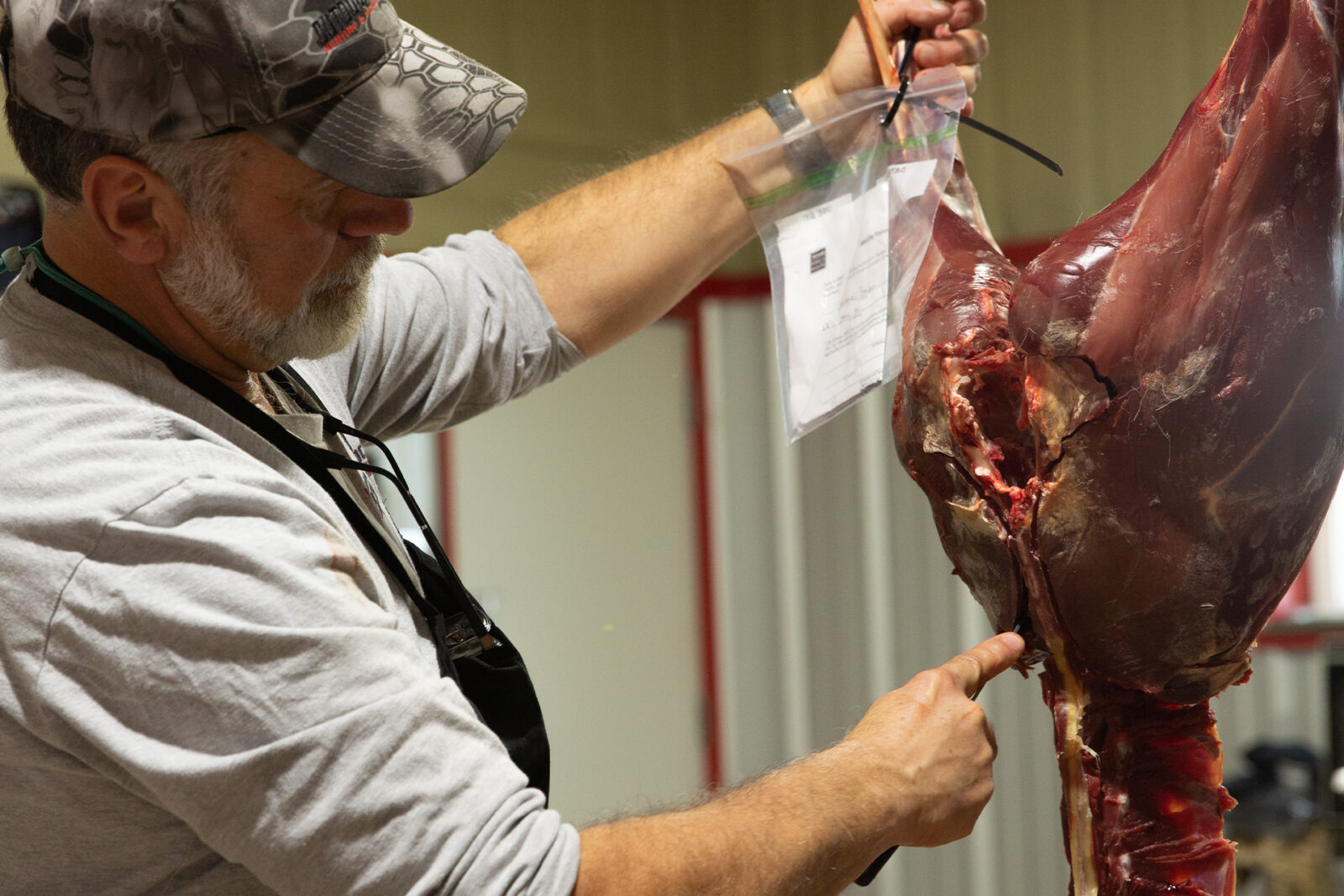
I’ve been able to marry my passion for the outdoors with my professional culinary career. My wife convinced me to write a venison cookbook, then a second, and eventually a third. We also produced a video on venison butchery. I’ve conducted seminars and presentations at every kind of sports show and national convention possible, and as a retired professional chef, I currently work for Greg Ray at Outdoor Solutions, teaching at the “From Field to Table” events and writing cooking columns, videos, etc.
Why is summer sausage such a solid, basic staple?
Eating is more than just the taste and flavor of a specific food—it embodies the entire experience. Nearly everyone has eaten one of those Hickory Farms meat and cheese boxes received for some type of celebration or holiday. It was the celebration or holiday that put us in the perfect mood for a taste and flavor that would trigger lasting memories for a lifetime.
If one of those memories didn’t trigger your taste buds, well, it could be that summer sausage is the perfect blend of meat and spices with just the right tangy flavor and texture that keeps us going back for more. The commercially-made summer sausages don’t need refrigeration, which makes life very convenient.
It’s basic: summer sausage is a semi-soft, cured, fermented, dried, cooked sausage. A culture has been added to the meat, which causes the fermentation process and cure that inhibits the growth of harmful microorganisms. The cure (along with the culture) increases the acid content which, in turn, gives that tangy flavor. The drying process reduces the moisture content, giving it that soft texture. If dried longer with or without cooking, it would be considered a hard salami. Basically, summer sausage is a form of food preservation when refrigeration is not available. We limit the growth of harmful microorganisms by the cure, the acid content, the lack of moisture, cooking, or smoking by time and temperature.
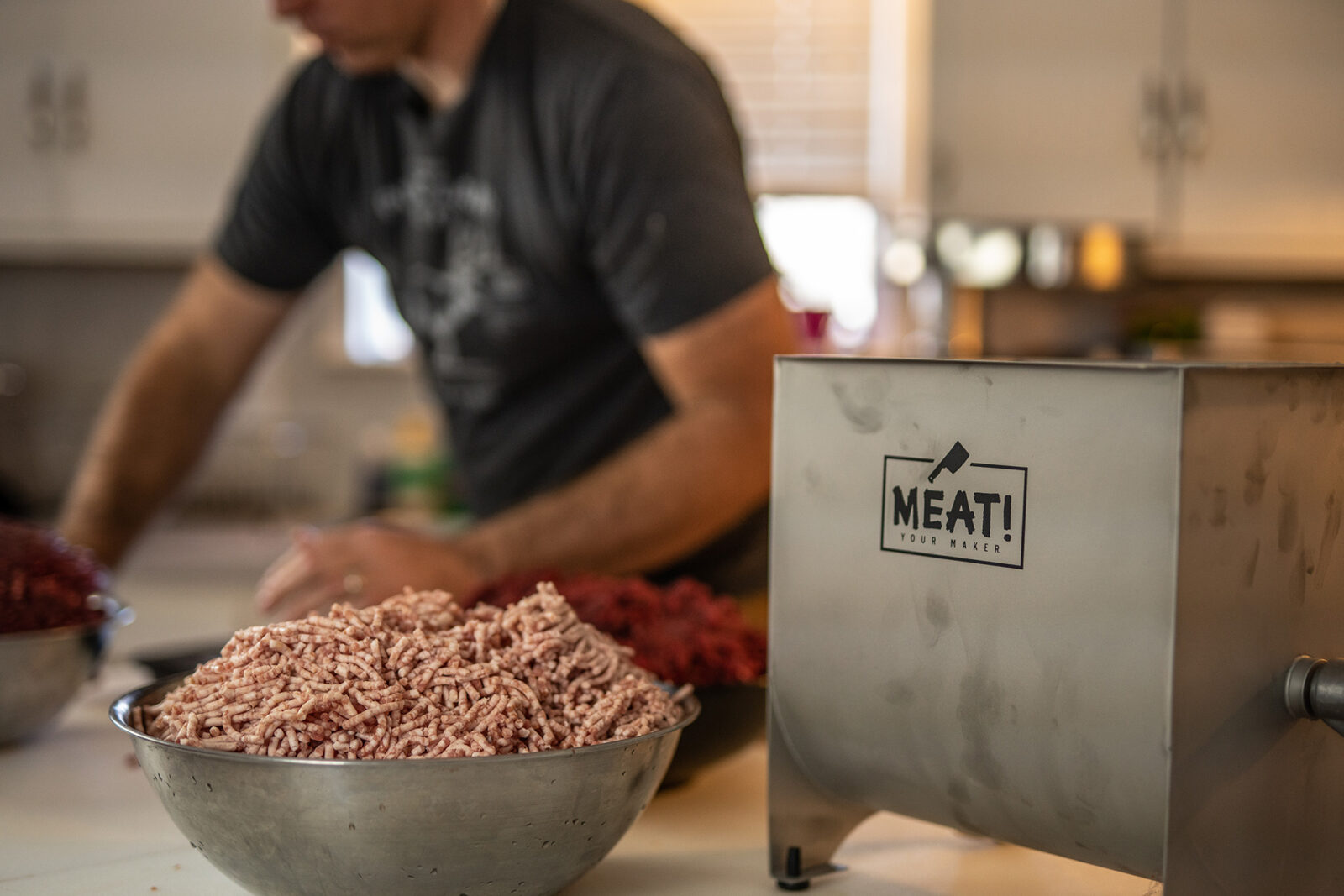
Why make your own summer sausage?
I call it “extending the hunt.” Rarely will I butcher and/or process our game alone; it’s always a family affair. We’ll take all those hunting memories and stuff them into a 2”-2 1/2” fibrous casing, then cure, dry, cook, and store. Then, while I’m out on the lake with family and friends trolling for lake trout we open up that package and release all that flavor and memories. It doesn’t get any better than that. Learning to butcher and process your game brings us full circle from field to table, and that is exactly what we teach at our events. It also saves you a ton of money, especially if you harvest more than one animal per season.
I call it “extending the hunt.” Rarely will I butcher and/or process our game alone; it’s always a family affair. We’ll take all those hunting memories and stuff them into a 2”-2 1/2” fibrous casing, then cure, dry, cook, and store.
Are there different regional recipes for summer sausage?
Summer Sausage is pretty generic, with a German and Swiss heritage. There are many similar sausages such as Lebanon Bologna and others. For summer sausage, the ingredients vary; some people will use ginger, coriander, or mustard, while others will add high-temperature cheeses. Some use all beef or a beef and pork blend, while others use various game meats. There are more specific regional sausages such as Andouille, Polish Brats, and Boudin.
What equipment is needed to prepare summer sausage?
MEAT! is our sponsor at all our From Field to Table events. They have excellent quality, affordable equipment. Like anything else, if you have the right equipment you can produce quantity more efficiently. Summer sausage can be made by hand using previously ground meats which are mixed well and hand-stuffed into fibrous casings. But this is the most difficult, time-consuming process which will result in a less consistent product.
The basic equipment needed is a grinder from which you can stuff the casing. Of course, there is luxury and/or necessary equipment, such as a foot pedal that runs the grinder so you can do the entire process by yourself. If you have the space and are producing large batches of mixed meats for various sausages, a meat mixer ensures proper mixing.
A sausage press or stuffer with various tubes or horns makes life so much easier and allows you to prepare an endless array of quality sausage products.
Even though store-bought commercial summer sausage does not require refrigeration, I still recommend that homemade sausages be refrigerated. It’s okay to throw some into your day pack or in the box of food when fishing, camping, or hiking, but out of habit I still store my processed meats in refrigeration when possible. My recommendation is to seal your homemade sausage in vacuum bags and freeze until needed. MEAT! offers a variety of quality, very affordable, vacuum and chamber vacuum sealers for all quantities. These machines will maintain quality and extend the shelf life of your frozen products.
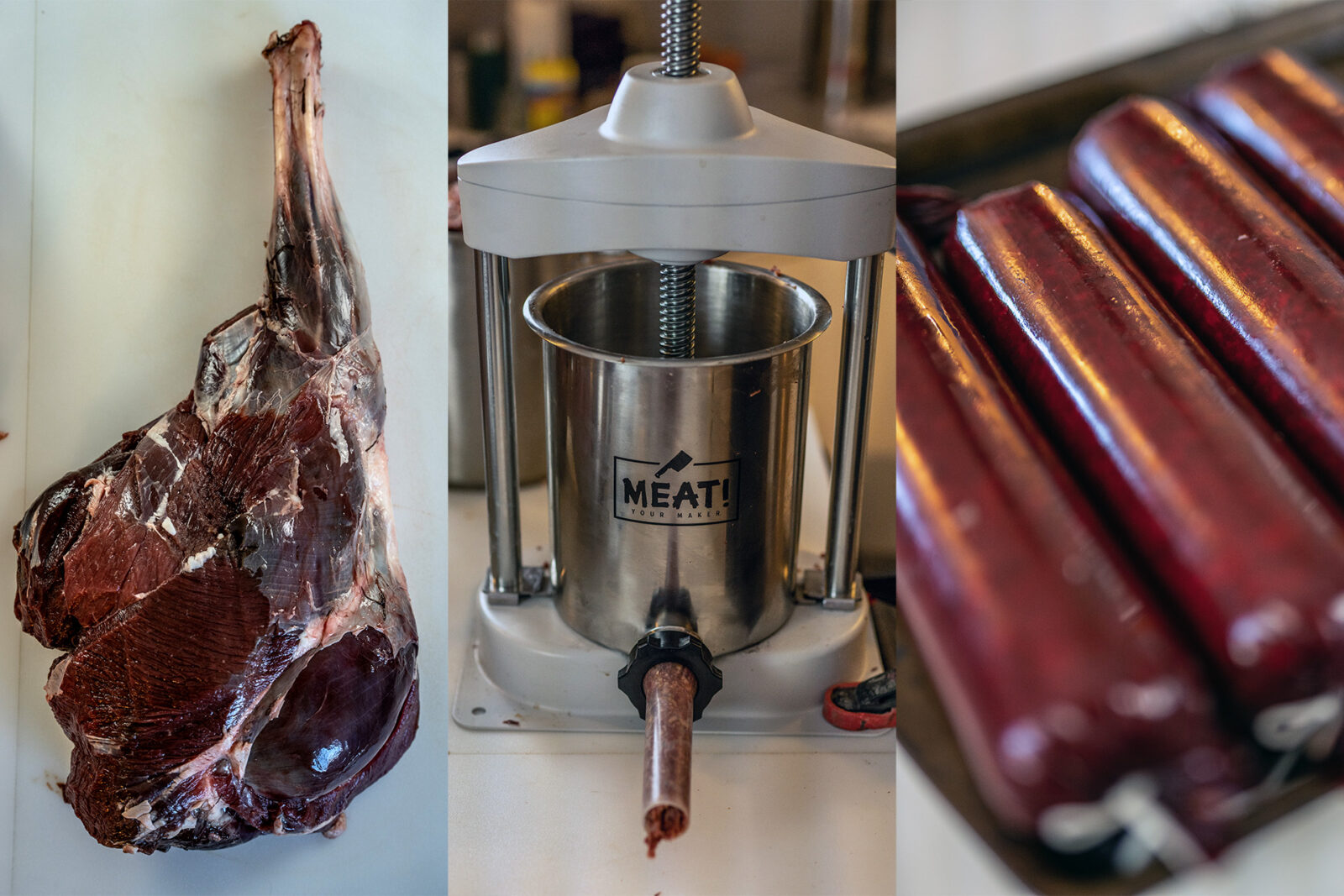
For recipes, many companies have professional chefs working daily on research and development. They’ve done all the experimenting for you; they’ve refined recipes and procedures to give you an excellent product. They have recipes, spice blends, and complete cost-saving packages. I’ve had success with SausageMaker as well as with Conyearger.
Here’s my basic summer sausage recipe to get you started. Remember, once you’ve made it you can tweak it to your personal flavor preferences.
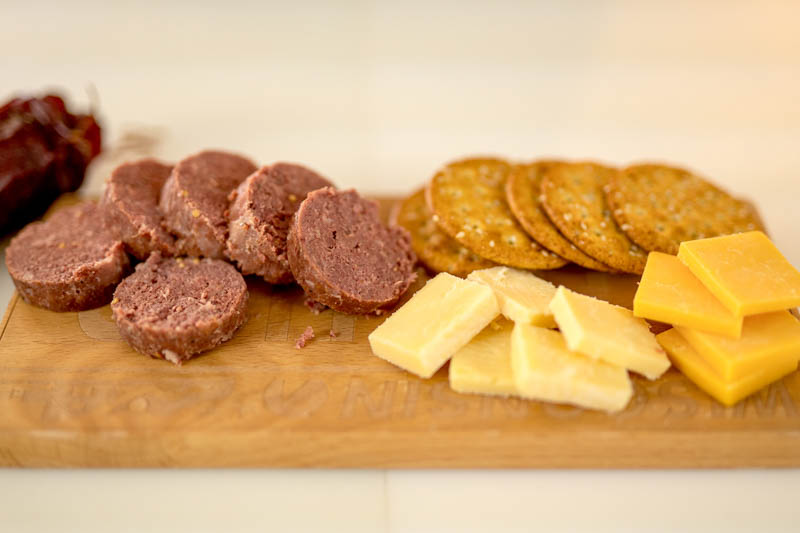
- 3 lbs. venison
- 2 lbs. pork butt
- 1 tsp. pink curing salt
- 2 T kosher salt
- 1 T black pepper
- 1 tsp. coriander
- 1 tsp. ginger
- 1 tsp. garlic powder
- 1 tsp. dry mustard
- ½ C brown sugar
- ½ C powdered milk
- 1 C ice water
- 2, 2 ½” fibrous synthetic casings
- Soak synthetic casings in cold water while preparing sausage meat.
- Grind meat through a large die grinder, then grind a second time through a medium die.
- Combine all dry ingredients.
- In a meat mixer or large bowl blend dry ingredients, alternating with ice water to meat.
- Mix thoroughly, creating bind. Meat should be sticky
- Place in sausage press, using 2”-2 ½” fibrous synthetic casings (non-edible).
- Hang or place uncovered in the refrigerator for 24-48 hours. (This is the drying, fermenting, and curing process.)
- Smoke at 160 degrees for 2-3 hours, increase heat to 225 F degrees and cook until internal temperature of 160 F degrees.
- Place into ice water bath to stop the cooking process.
- Chill, dry, and serve.
Notes:
When handling ground meat, always keep everything ice cold and use gloves.
Use only quality meat.
If using high-temperature cheese, use ½ lb. of cheese per 5 lbs. of meat.
Loved this recipe? See our latest on How to Make Pemmican.